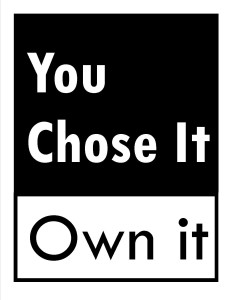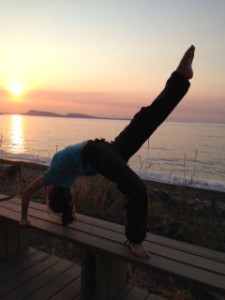Archive for August, 2015
Unconscious Bias in the Workplace
 I’ve been reading a lot about unconscious bias lately. It’s been fascinating to link from one article to the next, discovering research that provides a new lens to some of the work environments I learned about when conducting my own research of employees who quit their jobs. I heard plenty of stories from ex-employees who quit jobs where harassment, discrimination and violation of workplace policies were the norm instead of one-off incidents.
I’ve been reading a lot about unconscious bias lately. It’s been fascinating to link from one article to the next, discovering research that provides a new lens to some of the work environments I learned about when conducting my own research of employees who quit their jobs. I heard plenty of stories from ex-employees who quit jobs where harassment, discrimination and violation of workplace policies were the norm instead of one-off incidents.
Even when blatant acts of discrimination occur, if the people empowered to do anything about it (management) are unconsciously biased, they are likely to downplay the problems. “I have never seen anyone being discriminated against in our workplace.”
Of course you haven’t. If you’re not aware of a bias how could you see it?
Unconscious bias becomes a double whammy when it leads to bad behavior that is unchecked or worse, defended, because of the lack of insight. The effects can be seen in workplaces where raising a complaint can result in retribution, which is then also justified and disguised as performance problems. The victim is victimized twice. “You’re being too sensitive. You’re not a team player.”
Ugh.
What can you do when you see problematic behavior at work that others don’t? How do you eradicate a problem when people aren’t even aware that a problem exists?
You can speak up. I’m encouraged by the number of articles  and blog posts I’ve read on this topic. This LinkedIn post by Rachel Thomas was especially insightful, and it is where I learned about the Project Implicit site that I refer to below. You can ask your workplace to implement employee training, like Facebook and Microsoft recently did.
and blog posts I’ve read on this topic. This LinkedIn post by Rachel Thomas was especially insightful, and it is where I learned about the Project Implicit site that I refer to below. You can ask your workplace to implement employee training, like Facebook and Microsoft recently did.
You can also seek to uncover your own blind spots and then audit your behavior. Harvard hosts the Project Implicit site where individuals can test for hidden biases. I took multiple tests about gender, race and religion. Some of the test results disappointed me because they contradicted what I consciously tell myself about my beliefs. But that’s the point – to learn something I didn’t know about myself. Now I can monitor my thoughts and actions to reduce the potential that I will act on a negative bias without realizing it.
If you’re interested, the Project Implicit site describes their methodology and you can decided for yourself if you think your test results are valid.
Doing what you don’t want to do
 When it comes to doing something I don’t want to do, I make one of two choices:
When it comes to doing something I don’t want to do, I make one of two choices:
- I don’t do it
- I do it, and am clear about my reasons why
In career-land, this practice has been extremely useful. Anytime we work with other people there will be much that is out of our control. If we’re working for someone else’s business or entity, we don’t control the budget or policies. When we’re working with clients, we don’t control their business decisions. We don’t control the way other people act, either. There will be plenty of times when we are asked, told, or demanded to do things we don’t want to do.
At surface level, this is disempowering. However we almost always have choices. We can choose to go along to get along, negotiate, or say no and let the consequences be what they will be. Sometimes we make choices because we believe that the short-term discomfort is worth the long-term gains. Those gains might be money, career advancement or more opportunities later on. In any case, acknowledging to ourselves that we’re making a choice takes our power back.
I have a great non-work example. Last month I decided to do a showcase dance performance, something I’d been thinking of for the last three years. A non-competitive showcase is basically a dance recital for adults. In my case, I will be performing a Latin fusion routine with my dance instructor as the lead.
Partner dancing is one of my favorite hobbies. I’m most comfortable with country two step and other “bar dances” like the Cowboy Cha Cha, Schottische, and Horseshoe and have done them enough to have a great time without thinking much about the footwork. I also do ballroom dancing once in a while.
I will tell anyone that with all of these dances, I’m not a technical dancer. The moves are not executed perfectly and I’ll get off step once in a while. But I’ve danced enough to follow experienced leads and get back on count quickly, and I rely on styling and smiling for the rest. This has been just fine to have fun social dancing.
With this showcase, however, I’m learning a style of dance that is new to me and I want to be as technically accurate as possible from the beginning.
New style + new focus on technical precision = frustration2.
The Latin movement that I’m learning for the Rumba and Cha Cha is completely different from the type of dancing that I’m used to. I have to learn to move my feet, knees, hips and ribcage in a new way. It’s so unnatural to me that I feel like I’ve never danced before.
It reminds me of the last adult ballet class I took a few years ago, but it is even more painful. In ballet I can feel what the movement is intended to be even if I don’t perform the moves or sequences correctly. Latin motion is so new that I have no idea if I’m doing it right unless the instructor tells me.
To prepare for the showcase in two months, I’m taking three hours of lessons each week. It’s confusing, frustrating and embarrassing and I get so mad because each step is a struggle to execute correctly. I mostly hate it. And my attitude in class shows it, which isn’t fair to my instructor and only makes the lessons harder for me.
I could quit but I won’t. After years of relying on energy, expression and fancy moves instead of technical details, I am determined to learn how to perform the dances accurately. I’m choosing to take lessons that I dislike in order to dance well at the showcase and be a better social dancer afterwards.
In next week’s lessons I’m going to remind myself of the goal that I’m working towards. I’m also going to focus on being grateful for the opportunity and try to bring a lighter attitude to the studio.
To motivate myself, I watched the movie Dirty Dancing. If Baby could learn the Mambo in less than a week, I can learn Latin Rumba and Cha Cha in two months.
This experience is good practice for the work realm: remembering that I have a choice about doing things I dislike, including my attitude.
I still plan to have as many spins and dips in my routine as I can convince the choreographer to include, including something like the picture below.
 I have 63 days to work on this backbend. My hands and feet should be closer together with more arch in my spine and my leg pointed straight up in the air. The pretty sunset is like the flair that used to distract attention from my sloppy footwork. This time I want solid technique as my foundation and the fancy moves to be an enhancement.
I have 63 days to work on this backbend. My hands and feet should be closer together with more arch in my spine and my leg pointed straight up in the air. The pretty sunset is like the flair that used to distract attention from my sloppy footwork. This time I want solid technique as my foundation and the fancy moves to be an enhancement.
Will I do it? Yes I will. Nobody puts Baby in the corner.

Recent Comments